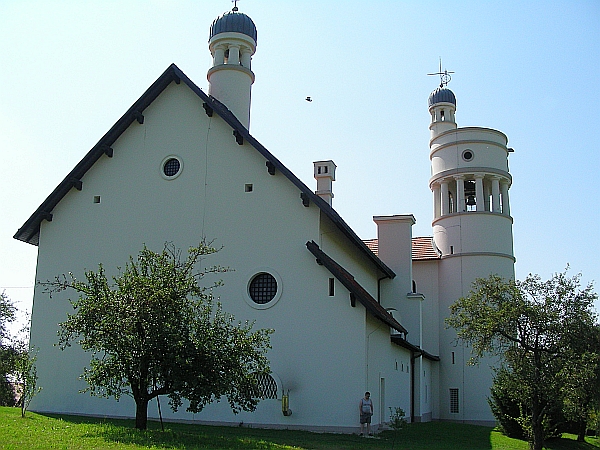
When driving across the plains of Slovenia’s Prekmurje region, attentive observers may notice an idiosyncratic church not far from the road. A closer look reveals and almost post-modernist blend of classical, cotemporary, and folk elements. Given the mélange, it doesn’t come as a surprise that the church in the village of Bogojina is the work of the always-original Slovenian architect Joze Plečnik.
The original Church of the Ascension dates back to the 14th century, although the structure was modified through the centuries. After World War I, a far-sighted man named Ivan Baša became the parish priest and realized that the village needed a larger church. He chose the inventive architect Joze Plečnik, who had gained extensive experience in Vienna, to carry out the task.
The construction of the church began in 1924, and although much of the structure was finished two years later, most of the interior fittings weren’t completed until the 1950s. Baša’s death in 1931 was just one of the setbacks.
Still, the results were impressive. Plečnik admired the area’s folklore and embraced the idea – proposed by a local man -- to cover the ceiling of the church with traditional clay pots, a nod to the region’s century-long tradition of pottery maker. Some local pottery is also featured in the altar.
Other elements, particularly the columns, are classical in nature. Plečnik complemented them with modern shapes; he made the cylinder a prominent architectural element throughout the church, and with his blend of styles, has given the church a timeless quality.
Plečnik’s determination to combine the old with the new is also reflected in his decision to preserve much of the original 14th century church. It now served as a foyer to the new church, and seamlessly blends in with the newer elements.
Plečnik remained deeply committed to the Bogojina church for much of his life. Shortly before he died in 1957, he designed the church’s pulpit, one of the last elements to be installed in the church.

































































